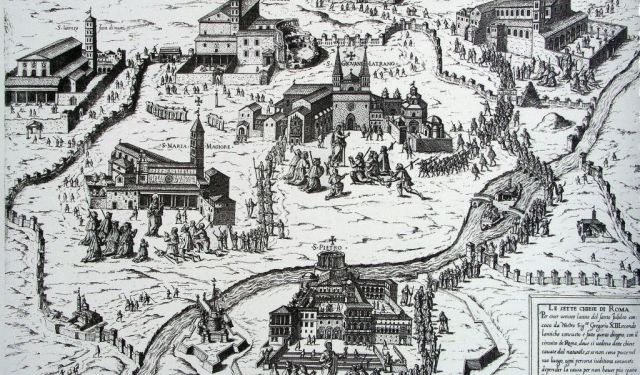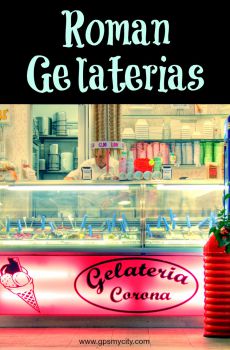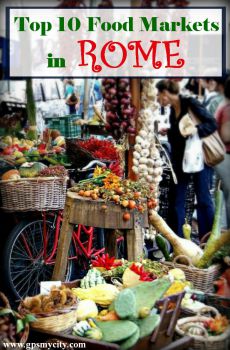
Neronian Cryptoporticus, Rome
A cryptoporticus, derived from the Latin words "crypta" (meaning crypt) and "porticus" (meaning portico), was a covered corridor or passageway in ancient Roman architecture. In English, it is commonly referred to as a "cryptoportico." This architectural feature served as a semi-subterranean gallery with vaulted ceilings, supporting portico structures aboveground, and allowing light to enter through openings at the tops of its arches.
On sloping sites, the open side of a cryptoporticus was often partially at ground level, providing support for structures such as forums or Roman villas. In this capacity, it served as the basis villae. Typically, the cryptoporticus was vaulted and illuminated by openings in the vaulted ceiling. In the letters of Pliny the Younger, the term "cryptoporticus" is used interchangeably with "crypt," indicating an underground space.
One notable example of a cryptoporticus is part of the Domus Tiberiana complex, which was the first imperial palace built on the Palatine Hill in Rome. This cryptoporticus, dating from the Neronian period between 54 and 68 AD, spans 130 meters in length. Emperor Tiberius and subsequent emperors of the Julio-Claudian dynasty, including Caligula, Claudius, and Nero, transformed the separate imperial residences into a unified palace complex. The cryptoporticus was an integral part of this expansion and unification.
Situated beneath the area that was later covered by the Horti Farnesiani in the sixteenth century, this underground corridor aligns with one side of the Domus Tiberiana. It is illuminated by small windows and features mosaic floors. Additionally, a replica of the stucco decoration from the coffered ceiling, adorned with depictions of plants and cupids, can be observed on the vaulted ceiling. The original stucco decoration is now housed in the Palatine Museum, allowing visitors to appreciate the intricate and artistic craftsmanship of the era.
On sloping sites, the open side of a cryptoporticus was often partially at ground level, providing support for structures such as forums or Roman villas. In this capacity, it served as the basis villae. Typically, the cryptoporticus was vaulted and illuminated by openings in the vaulted ceiling. In the letters of Pliny the Younger, the term "cryptoporticus" is used interchangeably with "crypt," indicating an underground space.
One notable example of a cryptoporticus is part of the Domus Tiberiana complex, which was the first imperial palace built on the Palatine Hill in Rome. This cryptoporticus, dating from the Neronian period between 54 and 68 AD, spans 130 meters in length. Emperor Tiberius and subsequent emperors of the Julio-Claudian dynasty, including Caligula, Claudius, and Nero, transformed the separate imperial residences into a unified palace complex. The cryptoporticus was an integral part of this expansion and unification.
Situated beneath the area that was later covered by the Horti Farnesiani in the sixteenth century, this underground corridor aligns with one side of the Domus Tiberiana. It is illuminated by small windows and features mosaic floors. Additionally, a replica of the stucco decoration from the coffered ceiling, adorned with depictions of plants and cupids, can be observed on the vaulted ceiling. The original stucco decoration is now housed in the Palatine Museum, allowing visitors to appreciate the intricate and artistic craftsmanship of the era.
Want to visit this sight? Check out these Self-Guided Walking Tours in Rome. Alternatively, you can download the mobile app "GPSmyCity: Walks in 1K+ Cities" from Apple App Store or Google Play Store. The app turns your mobile device to a personal tour guide and it works offline, so no data plan is needed when traveling abroad.
Neronian Cryptoporticus on Map
Sight Name: Neronian Cryptoporticus
Sight Location: Rome, Italy (See walking tours in Rome)
Sight Type: Attraction/Landmark
Guide(s) Containing This Sight:
Sight Location: Rome, Italy (See walking tours in Rome)
Sight Type: Attraction/Landmark
Guide(s) Containing This Sight:
Walking Tours in Rome, Italy
Create Your Own Walk in Rome
Creating your own self-guided walk in Rome is easy and fun. Choose the city attractions that you want to see and a walk route map will be created just for you. You can even set your hotel as the start point of the walk.
Palatine Hill Walking Tour
Palatine Hill is one of the seven hills of Rome and the most ancient part of the capital. Based on Roman mythology and archaeological evidence, this hill is considered the birthplace of the city – a place where legendary Romulus founded it in 753 BC. Furthermore, the very word “palace” – indicating the emperor’s residence (“Palatium”), much as that of other dignitaries and prominent... view more
Tour Duration: 1 Hour(s)
Travel Distance: 1.0 Km or 0.6 Miles
Tour Duration: 1 Hour(s)
Travel Distance: 1.0 Km or 0.6 Miles
Food Tasting Walking Tour
Whether it’s a long lunch or a stop-off for an ice cream on an evening stroll, eating in Rome is a very social activity. Culinary traditions run deep here, and it may well be one of Italy’s most pleasurable cities in which to eat. Deli shops, prosciutterias, pizzerias, fornos (bakeries) and caffès are also very popular and offer a great alternative to a restaurant meal.
On this... view more
Tour Duration: 2 Hour(s)
Travel Distance: 2.7 Km or 1.7 Miles
On this... view more
Tour Duration: 2 Hour(s)
Travel Distance: 2.7 Km or 1.7 Miles
"Roman Holiday" Movie Walking Tour
Filmed entirely in the heart of Rome, Roman Holiday is one of those timeless films that beckons you to hop on a Vespa and lose yourself in the intoxicating beauty of the Italian capital. Released in 1953, this beloved classic has captured hearts across generations, thanks to its irresistible blend of romance, adventure, and charm—anchored by two of Hollywood’s brightest stars, Audrey Hepburn... view more
Tour Duration: 4 Hour(s)
Travel Distance: 8.5 Km or 5.3 Miles
Tour Duration: 4 Hour(s)
Travel Distance: 8.5 Km or 5.3 Miles
Holy Sites Walking Tour
As the cradle of the Catholic Church, one of the world's largest organizations, Rome has a large number of valuable, sacred places of worship. Crowded with architectural splendors from different periods of time, each of its churches and basilicas represent a significant part of culture and history.
Take this self-guided walking tour to discover Rome's magnificent religious heritage,... view more
Tour Duration: 3 Hour(s)
Travel Distance: 6.9 Km or 4.3 Miles
Take this self-guided walking tour to discover Rome's magnificent religious heritage,... view more
Tour Duration: 3 Hour(s)
Travel Distance: 6.9 Km or 4.3 Miles
Seven Pilgrim Churches of Rome Walking Tour
Rome has long played host to pilgrims—after all, it's home to the Pope, the Catholic Curia, and a treasure trove of relics linked to apostles, saints, and martyrs. Back in the day, the Via Francigena provided a straight shot for the faithful traveling from England to Rome. Upon arrival, it was tradition to visit the tombs of Saints Peter and Paul. When a Jubilee rolled around, the spiritual... view more
Tour Duration: 6 Hour(s)
Travel Distance: 17.4 Km or 10.8 Miles
Tour Duration: 6 Hour(s)
Travel Distance: 17.4 Km or 10.8 Miles
Vatican Walking Tour
Consisting of a walled enclave within the city of Rome, the Vatican is the world’s smallest sovereign state, as well as a symbol (and headquarters) of the Roman Catholic faith. Although only 44 hectares in surface, one is amazed by the vastness of this place and the sheer size of everything. When gazing around in all directions, you realize how much can be achieved by people working in faith for... view more
Tour Duration: 2 Hour(s)
Travel Distance: 3.4 Km or 2.1 Miles
Tour Duration: 2 Hour(s)
Travel Distance: 3.4 Km or 2.1 Miles
Useful Travel Guides for Planning Your Trip
17 Best Gelaterias in Rome Italy
For ice cream lovers and dabblers this guide is a treasure chest of Rome’s best gelato shops. There are gelaterias everywhere. Many visitors to Rome only have a few days to explore the city. You owe it to yourself to make the most of your time and find the gelato locals eat. Often the authentic...
Souvenirs Shopping: 15 Authentic Italian Things To Buy in Rome
Rome is the Eternal City and, as such, the list of gift options available here is countless. Whether it's something edible, drinkable, wearable or pleasing to the eye that you want - you will find it all here in abundance. However, if time or budget is the factor, perhaps you might want to...
10 Best Food Markets in Rome Italy
Of all the things Italy is most famous for (cars, music, fashion, movies, etc.), food is, undoubtedly, top of the list. Rome may well not be the whole Italy, but no Italy is whole without Rome... And the Romans, much as all their fellow-Italians, like it "fresco", hence the abundance of...









